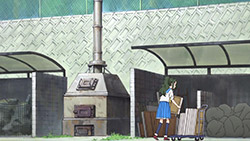 |
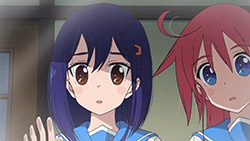 |
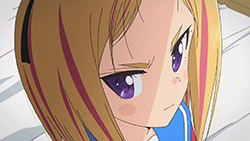 |
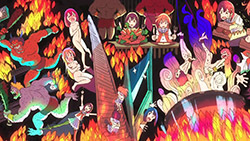 |
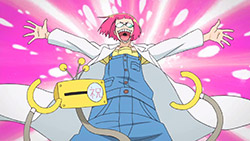 |
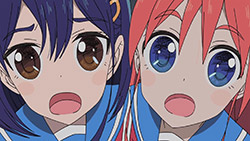 |
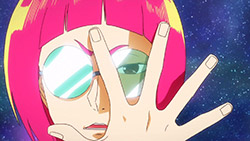 |
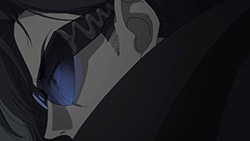 |
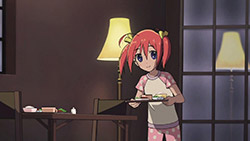 |
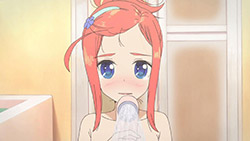 |
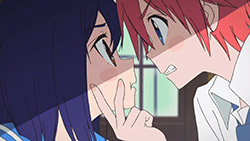 |
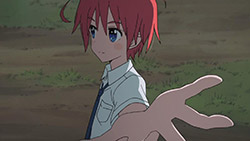 |
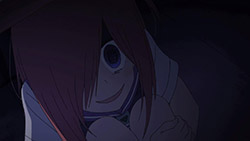 |
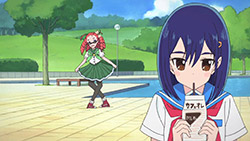 |
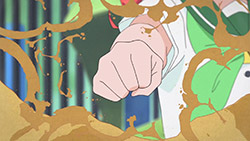 |
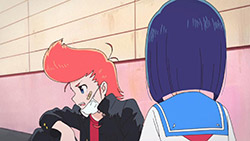 |
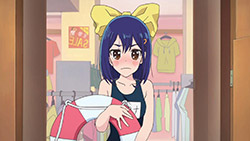 |
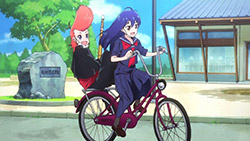 |
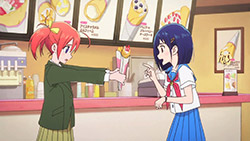 |
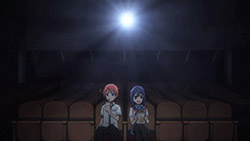 |
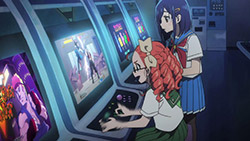 |
 |
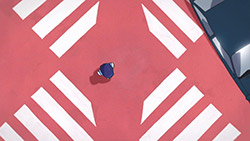 |
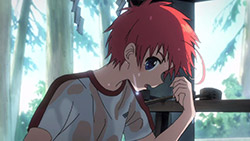 |
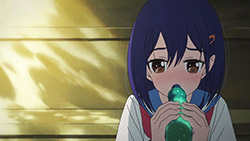 |
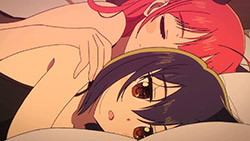 |
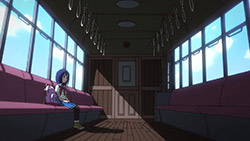 |
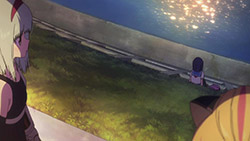 |
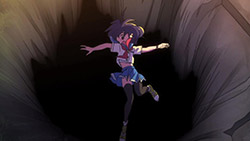 |
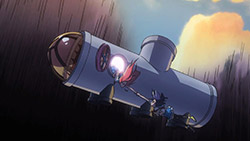 |
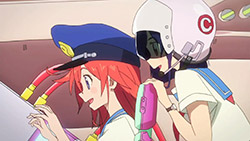 |
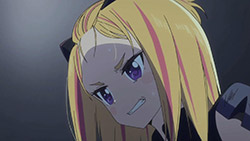 |
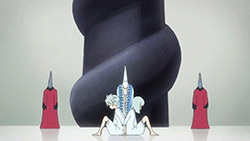 |
 |
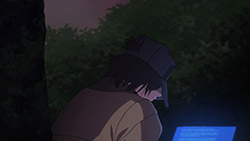 |
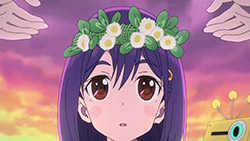 |
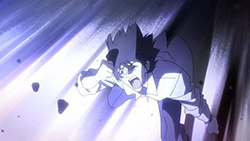 |
 |
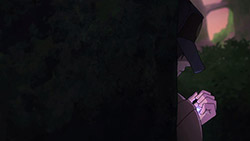 |
「ピュアコンポーネント」 (Pyuakonpōnento )
“Pure Component”
I have mostly given up on understanding Flip Flappers. Whether it even wants to be understood is debatable. Certainly, bringing transparency to its plot does not seem to a short-term priority. In fact, it seems to revel in its opaqueness. There’s no need for the Jojo-theatrics, Flip Flappers. You’re enjoying how little anyone knows about anything a tad too much. If you want to keep the mystique going it’s fine to just stick with Dr Salt’s cryptic nonsense. You want to keep your cards close, I understand. It’s cool. I’m fine with following along and being generally confused.
But…
Who’s Mimi?
I should know this, shouldn’t I? When I wrote the preview for Flip Flappers I quite confidently identified the wish-granting fragments our magical girls were collecting as the ‘Shards of Mimi’ without knowing what that actually meant, and sure enough, the show punishes me for it by not actually using that name at all and only now popping up an alleged Mimi in a monochrome flashback. Well, my bad. They fact that Flip Flappers is attaching faces to proper nouns, though, is a good sign. It shows that FF knows what its plot looks like, and is still dedicated to dripping it through our IVs every episode. To be honest, though, I’m not actually too concerned about the plot. For a show like this, which is one big mass of imagery and symbolism only haphazardly held together by a plot, more important, for me, is what it stands for thematically. Flip Flappers is chock full of ideas, and I want to see them come together. Good news: they do seem to be with each episode, and quite clearly in this one.
I obliquely described Flip Flappers as being confusing earlier, but it’s not quite that. At least, it’s confusing in a ‘good’ way, if that’s possible. So, usually when an anime is confusing, it’s because it’s messy nonsense created by a writer who doesn’t have a very good grasp of logic, or perhaps a director who didn’t block a scene very well. There’s a failure of communication between the show and the audience. But Flip Flappers doesn’t suffer like that. I’d say it communicates perfectly effectively; no matter what it shows me, I am engaged and follow along. Rather than not getting its ideas across, Flip Flappers gets an overabundance of ideas across. I consider that a good thing, for the most part. It’s simply constantly mentally (and visually, and sometimes even emotionally) stimulating every step of the way. Yayaka makes a remark about Pure Illusion being Hell. It’s filled with trials and arranged in levels so… is it Hell, of Dante’s circles or perhaps Buddhism’s myriad layers? But Bowl-Cut talks about Pure Illusion as a mix of different perceptions, perhaps referencing Jung’s collective unconscious, and maybe that’s what changed Iro-senpai. Flip Flappers wants us to look at everything from multiple angles, it seems, and that, along with all its homages and references (the psychology, of course, and the train scene feels like Spirited Away while the abyss is from Howl’s Moving Castle) means that Flip Flappers is at least never dull. But constantly asking questions—throwing out ideas—is easy. Answering them is the hard part.
As I said, it does seem to be something Flip Flappers is doing. The most consistent thread, in all of FF‘s methodical madness, is that we always see things from Cocona’s perspective, even as FF acknowledges that it’s not the only one (e.g. it always seems that Papika goes missing, even if it’s arguably the other way around). And so much of the show is about her mindset, and in this episode how she views her relationship with Papika. Being the analytical one, it’s almost as if Cocona experiments with a whole bunch before concluding that none of them feel quite right. So, what is Cocona x Papika? More than ever, I’m convinced that they’re two halves of a greater whole, symbolically or otherwise. Whatever they be—Id and Ego, rational and emotional, left and right hemispheres, anima and animus—they succeed together and fail apart. It makes for a neat contrast with Yayaka, at any rate. I had thought her perhaps part of a trio with Cocona and Papika—as the Superego or something, I dunno—but more and more she’s the odd one out. In a world that emphasises pairs, she is along, and is thus considered inferior to the twins. She alone of those who adventure in Pure Illusion has drive and purpose, but she’s also the most disposable pawn.
I’m sure some would think I’m reading too much into everything, and that I should just sit back and enjoy the show as is. But what is Flip Flappers, as is? I truly think it wants us to seek that out ourselves. It’s certainly more fun that way. But I guess I wouldn’t be a blogger if I thought otherwise.
Full-length images: 04.
Preview
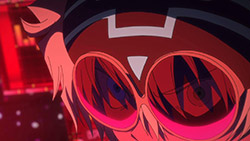 |
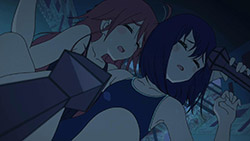 |
 |

Really nicely worded review, so thanks for the effort you put into it every week!
As for the symbolism of this episode, while all the aforementioned interpretations seem possible, I’d like to add another one to the mix. Although Pure Illusion being a kind of personally customizable virtual reality made possible by futuristic technology wasn’t a bad guess even before this episode, the statement of “Bowl-Cut” that the singularity is upon us seems to corroborate my convinction that there could be some semi-scientific reading of the main storyline. (This show is so full of references, that it is hard to say whether something is a connotation, or not, but when “Bowl-Cut” said the aforementioned line, at first it came to my mind that it must be a reference to the book titled ‘The Singularity Is Near: When Humans Transcend Biology’ by Ray Kurzweil. And even the original Japanese sentence matches with the raw Japanese translation of the book’s title: シンギュラリティー は 近い) So this gave me the idea, that Pure Illusion could be something akin to the extension of the human mind (which is of course aligns with the psychological interpretations, too), which Kurzweil envisions as the next step of evolution in the history of the universe in his book. The sci-fi setting would also explain some other “magical” occurences, like the flying surfboard being casually accepted by other people, or the weird (maybe genetically modified) plants and birds shown in episode four.
Show Spoiler ▼
Thank you, and all you other readers, for being here! Flip Flappers is simply an incredible show, and inspires one to write. As it did for you too, it seems 😉
I don’t doubt that you’re on the right track. While the episodes have mostly been about psychology and whatnot, the episode titles very conspicuously reference electronics.
Finally caught up!
Too add to what you said:
Show Spoiler ▼
I personally don’t think Papika is an interesting enough character to warrant even half of those entities she showed up as. Nor do I think them focusing on the idea of “Do you really know a person?” works when the person it revolves around has had barely 10 minutes of screentime up to this point. Maybe the characters know her more, but as an audience, it’s not nearly as rewarding an experience. And rather than using the magical girl powers they had, Papika saves Cocona via flying submarine summoning she can do now.
Okay, you’re right, I must have missed some stuff that really makes this show shine, because its lack of basic storytelling really doesn’t do anything for me now and I’m throwing the white flag for this show. I’m glad you see something in its nature, but I’m too exhausted and noncaring to read in between the lines of what it offers. Enjoy the rest of the ride, my friend.
That’s a crying shame. At the same time, I understand that Flip Flappers is not a conventional show, and not for everybody. Enjoy the rest of the anime season.
Yep your not getting the joke or in this case not getting the art and the mood. People vary a huge deal so almost no joke type or art type will please everyone. And when your trying to logic out why a joke or art does not work your must realize that is not it, it is you did not get the joke that is all it’s a type of food that most people like that you do not.
In a Art show like Flip Flappers you can like some who enjoy it try to logic out the crumbs given or like me you just enjoy the ride note the crumbs but do not spend much time figuring out things till it reaches conclusion.
It’s very minimum crumbs as well…. even marathoning to this point their are a lot of opened ended strings that probably won’t get explained completely like the “magic” of this/these worlds. (But things are starting to line up).
It kind of reminds me of Space Dandy/Invader Zim and Jinrui wa Suitai Shimashita had a baby. This is another “fairy tale” story more so than a magic girls one, that is being very heavily implied with the end credits as well. 😉
Again I loved it.
Senpai following the saying that often great art is born of suffering. The happy singer can often compose less and then a break up and the songs pour out. The happy painter can often paint less. Many figures you can read about accomplished their success from dealing with pain, no pain no success. Yet to want others to be in pain so you can enjoy their art is wrong the conflict can tear at one’s heart. Out side of art it can get even more a emotional trade off as some have used their pain to achieve great things for a large number of people.
Senpai no longer had the pain that created the art she was taking to dispose, she had lost her connection to it, she was no longer that way more miserable person. Cocona saw this as a negative but is it? Yes the lose of good art is bad Cocona should have been can I have it at least to sell at the next yard sale I think it is good and the fact you do not think it’s good anymore do not let you destroy what others like. But there are happy artists that produce a lot you can hope that Senpai will become that some day, but if Senapi has a happy life without art is that bad?
I am glad that they visited the any change thinking it for the better can have consequences you did not intend. Thus why time travelers are often warned do not change anything. Yes the deeper level that effects the real world is a dangerous one.
the preview images aren’t working
Fixed!